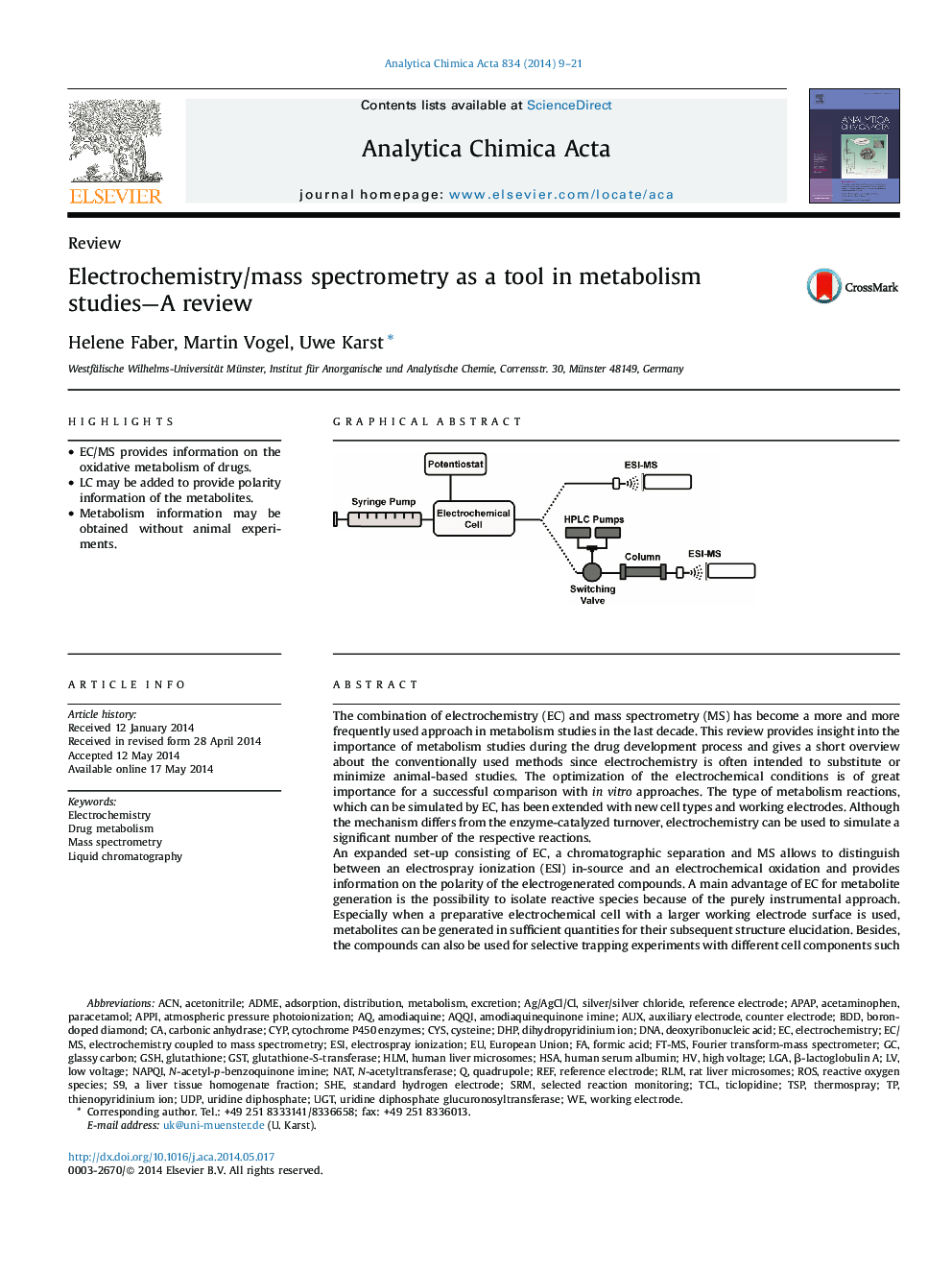| کد مقاله | کد نشریه | سال انتشار | مقاله انگلیسی | نسخه تمام متن |
|---|---|---|---|---|
| 1164468 | 1490998 | 2014 | 13 صفحه PDF | دانلود رایگان |
• EC/MS provides information on the oxidative metabolism of drugs.
• LC may be added to provide polarity information of the metabolites.
• Metabolism information may be obtained without animal experiments.
The combination of electrochemistry (EC) and mass spectrometry (MS) has become a more and more frequently used approach in metabolism studies in the last decade. This review provides insight into the importance of metabolism studies during the drug development process and gives a short overview about the conventionally used methods since electrochemistry is often intended to substitute or minimize animal-based studies. The optimization of the electrochemical conditions is of great importance for a successful comparison with in vitro approaches. The type of metabolism reactions, which can be simulated by EC, has been extended with new cell types and working electrodes. Although the mechanism differs from the enzyme-catalyzed turnover, electrochemistry can be used to simulate a significant number of the respective reactions.An expanded set-up consisting of EC, a chromatographic separation and MS allows to distinguish between an electrospray ionization (ESI) in-source and an electrochemical oxidation and provides information on the polarity of the electrogenerated compounds. A main advantage of EC for metabolite generation is the possibility to isolate reactive species because of the purely instrumental approach. Especially when a preparative electrochemical cell with a larger working electrode surface is used, metabolites can be generated in sufficient quantities for their subsequent structure elucidation. Besides, the compounds can also be used for selective trapping experiments with different cell components such as small peptides, proteins or DNA bases. Current and possible future developments and applications of EC are presented and discussed as well.
Figure optionsDownload as PowerPoint slide
Journal: Analytica Chimica Acta - Volume 834, 27 June 2014, Pages 9–21
